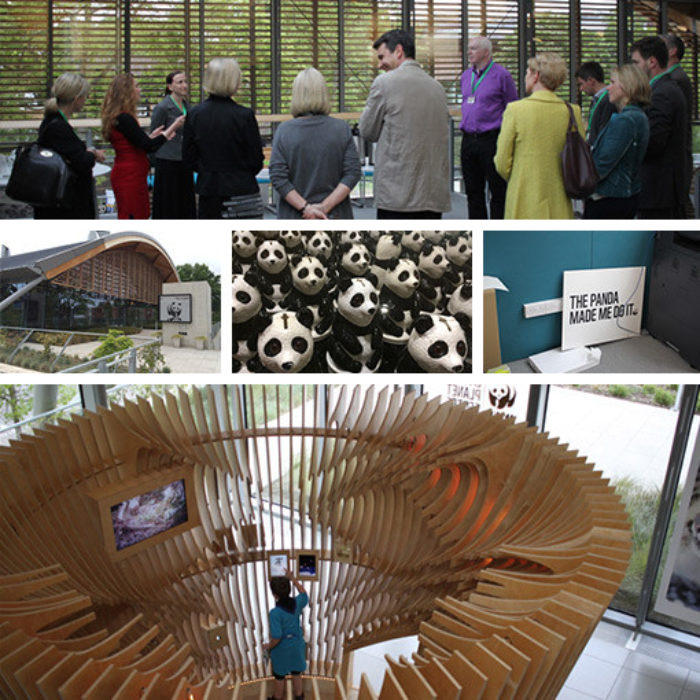Become an innovative organisation: Open up!
This blog series explores the shared characteristics of innovative people and organisations, with a particular focus on what innovators think, feel, believe and do. We’re also looking at how we can all do more to encourage and create innovative workplace cultures.
A key characteristic shared by all organisations with a spirit of innovation is the ability to open themselves up, physically and intellectually.
“The border of the company is not important.”
Tan Lixia, Chief Financial Officer, Haier
Raise your hands
There are five good reasons to open up your organisation. Let’s call them the high five.
1. Open up to everyone in our human community: In his book ‘Open’, Johan Norberg makes the case: “The more people there are, the greater the chance that someone will come up with a useful idea or technology.” And yet, he continues, “most societies throughout most of history have discriminated against women, thereby in effect halving the ability to make progress.”1 An example of this can be seen in the creative industries. Two-thirds of art gallery visitors are female, and yet displayed artworks are more likely to be produced by men. Furthermore, the Royal Academy of Arts only elected its first female president in 2019.
2. Open up innovation beyond the organisation: Tan Lixia is the CFO at Haier, a Chinese home appliance and consumer electronics business. She sums up the company’s mindset to open innovation this way: “The border of the company is not important. If you can help create value for users, it shouldn’t matter whether you’re an employee or not.”2 The world’s successful corporate innovators, like 3M, Procter & Gamble and Reckitt Benckiser, have open innovation platforms that encourage ideas from anywhere.
3. Create open spaces: Pixar has designed its central atrium to enable casual contact. “Most buildings are designed for some functional purpose, but ours is structured to maximise inadvertent encounters,” says Ed Catmull, co-founder of Pixar. The Francis Crick Institute opened Europe’s largest biomedical lab in London in 2016. It is home to 1,200 scientists. The layout was designed to get people interacting by creating “a bit of gentle anarchy,” says director Paul Nurse3. ASDA’s main office in Leeds is a vibrant hub of activity, with music, the smell of fresh food, charities promoting new initiatives, and employees gathering and chatting.
4. Open employee eyes and ears to ideas from everywhere: Innovative organisations actively encourage employees to go to conferences and arts festivals, tune into TED talks or the RSA, subscribe to magazines like New Scientist or Uncut, read books and watch documentaries. This isn’t an indulgence. It’s how to tune into new thinking, learn from other disciplines, make connections and make curiosity a habit. Innovative organisations catalyse informal networks between colleagues who share similar passions. They also encourage active creation of art, music, photography and any other way employees can express their creativity.
5. Spread new ideas as if they were contagious: There is a range of platforms on which we can meet people with different ideas. Their uses include learning together, solving problems collaboratively, finding shared passions, laughing together and eating together. “It’s totally possible for you to be sitting by someone who has been working in an area that you were not interested in. And then suddenly a discussion with that person may trigger some new ideas for both of you,” says Gagan Saksena, former software engineer at Google4. Yuval Noah Harari, in his book ‘Sapiens’, does the maths: “In a band of fifty individuals, there are 1,225 one-on-one relationships, and countless more complex social combinations.” Any one of these connections can spark an idea.
———————————————————————————————————————————————————-
Social media can be the opposite of openness
Adam Kucharski, Associate Professor at The London School of Hygiene and Tropical Medicine, shares why social media platforms usually do the opposite of opening our minds. “When sociologists at Duke University got US volunteers to follow Twitter accounts with opposing views, they found that people tended to retreat further back into their own political territory afterwards,” he says. “Although having meaningful face-to-face conversations can help change attitudes, viewing opinions in an online feed won’t necessarily have the same effect.”
We are attracted to an article or post, however, if it evokes a positive emotion, is surprising, has ‘new’ news, is funny, or is of practical value. Researchers at MIT found that ‘false news’ spreads further and faster than ‘true news’ and generally originates from people with fewer followers. Why? Because, according to Kucharski, “false news is generally more novel than true news.”
———————————————————————————————————————————————————-
Learn more
This article is taken from John Drummond’s book Innovation for Everyone, which explores the unifying characteristics of innovative people and organisations, with a particular focus on what innovators think, feel, believe and do.
The full book is free to members of The Human Centre; this new think tank and professional network is focused on achieving human-centred organisational change by connecting you to new insight, ideas and connections. Learn more at thehumancentre.net
And if you want a chat about how to create a more innovative, open culture in your organisation, just drop me a line at john.drummond@corporateculture.co.uk
1 Johan Norberg, ‘Open: The Story of Human Progress’, Atlantic Books, 2020
2 Gary Hamel, Michelle Zanini, ‘Humanocracy: Creating Organisations as Amazing as the People Inside Them’, Harvard Business Review Press, 2020
3 Adam Kucharski, ‘The Rules of Contagion: Why Things Spread and Why They Stop’, Wellcome Collection, 2020
4 Jeff Dyer, ‘The Innovators DNA’, Harvard Business Press, 2011




